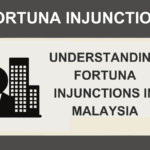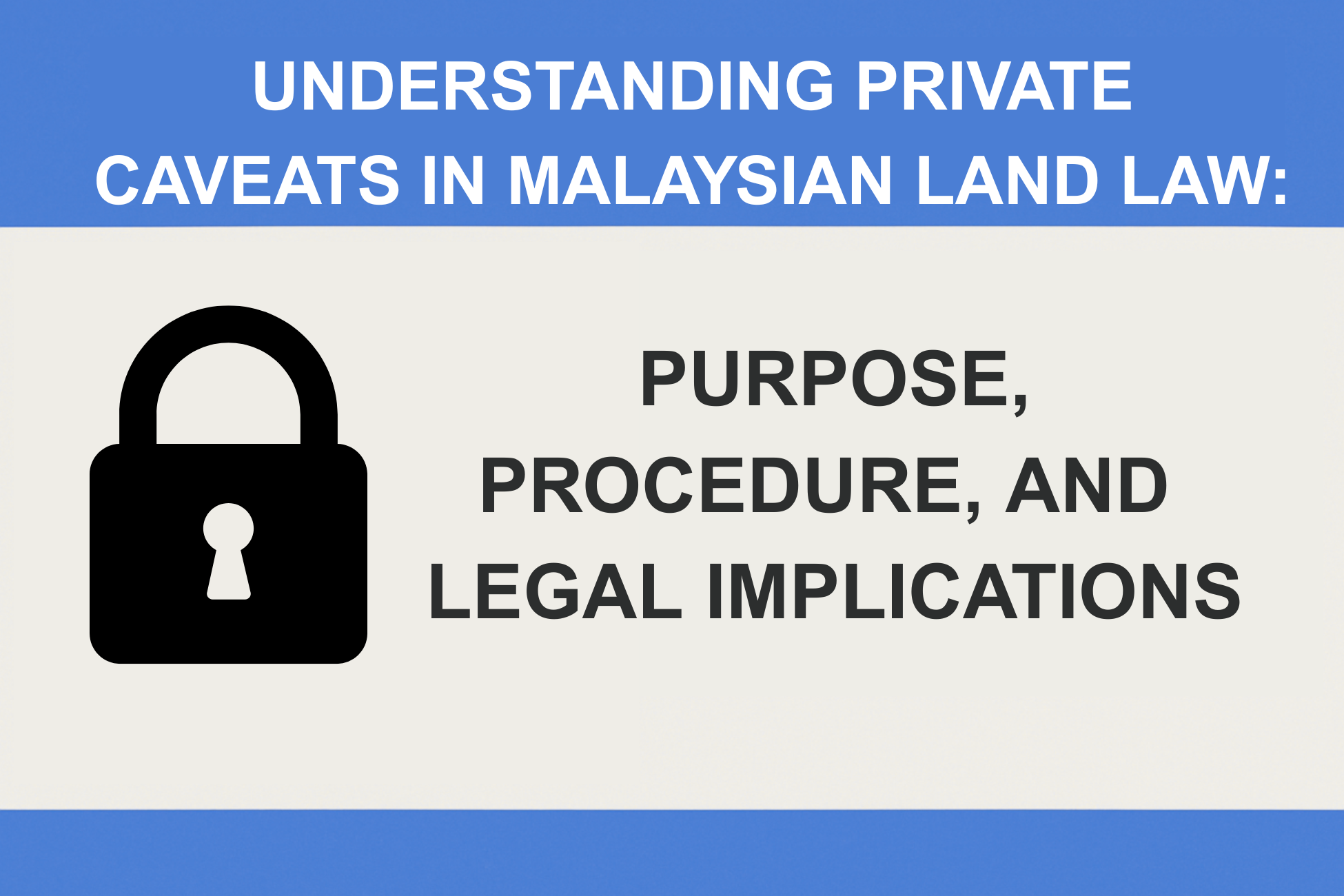
Constructive Dismissal: Understanding Employee Rights and Employer Responsibilities
April 3, 2025
Understanding Fortuna Injunctions in Malaysia
May 26, 2025By: Shahrizal Mizani Abd Khamis
In Malaysian land law, a caveat is a formal legal notice lodged with the land registry to protect a party's interest in a property. Derived from the Latin term meaning "let him beware," a caveat acts as a precautionary mechanism to ensure that no dealing such as a sale, transfer, lease, or mortgage can proceed without notifying the person or entity who lodged it (the caveator). Governed primarily by the National Land Code (NLC), particularly Sections 323 to 329, a caveat serves as a critical tool in land transactions. It must be noted that lodging a caveat does not equate to transferring ownership or any proprietary right. Instead, it merely serves as a warning that another party claims an interest in the land and any transaction must consider that claim.
The primary purpose of a caveat is to safeguard the rights or interest of an individual or entity in a piece of property. It acts as a temporary freeze on dealings with the land to protect the caveator's claim. For example, in situations where a purchaser has entered into a sale and purchase agreement but the title has not yet been transferred, the purchaser may lodge a caveat to ensure the landowner does not sell the property to another buyer. This legal mechanism ensures transparency and protects interests that might otherwise be defeated by unscrupulous dealings or unforeseen transfers. In the case of Sim Kok Beng v Goh Hua Yin [1986] 1 MLJ 421, the court recognized the right of a purchaser to lodge a caveat to protect an equitable interest arising from a sale and purchase agreement. Similarly, in Tan Ying Hong v Tan Sian Sang & Anor [2010] 2 MLJ 1, the Federal Court underscored the seriousness of wrongful caveats and emphasized the need for genuine interest as the basis for lodging one.
A private caveat is specifically a caveat lodged by an individual or non-governmental entity under Section 323(1) of the NLC, who claims a legal or equitable interest in the land. This differs from a registrar's caveat, which is entered by the Land Administrator or Registrar under Section 320 NLC, often in cases involving government interests, pending investigations, or fraud suspicions. It also differs from statutory caveats, which may be imposed by operation of law, for example in bankruptcy or trust situations. A private caveat is typically lodged to assert personal rights such as those of a buyer, beneficiary, or creditor. For instance, a creditor claiming an equitable lien based on unpaid consideration may protect their interest by filing a private caveat.
The right to lodge a private caveat is not available to everyone indiscriminately. Only those who possess a registrable or equitable interest in the land are entitled to do so. Eligible caveators include purchasers under an agreement for sale, beneficiaries under a trust, spouses with claims under matrimonial property regimes, and judgment creditors. In Hong Leong Bank Bhd v Low Thiam Hoe & Another Appeal [2016] 2 MLJ 301, the Federal Court held that an equitable interest arising from a constructive trust was sufficient to justify a caveat. Similarly, in Lian Keow Sdn Bhd v Overseas Credit Finance (M) Sdn Bhd [1988] 2 MLJ 449, the court upheld the lodging of a caveat by a financier with an unregistered interest.
The procedure for lodging a private caveat involves several steps, carefully set out in the National Land Code and related practice directions. First, the party intending to lodge the caveat must complete Form 19B, which includes essential details such as the identity of the caveator, the land in question, and the nature of the interest being claimed. This form must be supported by a statutory declaration affirming the truth of the caveator’s interest and signed before a Commissioner for Oaths. Once the documents are prepared, they are submitted to the relevant Land Office along with the prescribed filing fee. Upon successful registration, the caveat takes immediate effect and the Land Office must notify the registered proprietor of the land. The caveat remains effective for six years unless withdrawn, removed by court order, or extended.
It is important to note that a caveat may be removed through several mechanisms. Under Section 327 of the NLC, the registered proprietor or any interested party may apply to court for the removal of a caveat if it is believed that the caveator does not have a valid interest. The court, after considering evidence from both sides, may order its removal if the caveat is found to be baseless or malicious. In Tan Ying Hong, the Federal Court emphasized that wrongful lodgement of caveats may attract liability. Alternatively, a caveator may voluntarily withdraw the caveat using Form 19G. If the caveator fails to initiate legal proceedings to maintain the caveat after being served with a notice to remove, the caveat will lapse automatically.
In conclusion, the caveat mechanism under Malaysian land law plays a crucial role in protecting the rights of those with legal or equitable interests in land. While it offers an important safeguard, the system must not be abused through frivolous or malicious lodgements. The procedure to lodge a private caveat, although relatively straightforward, requires proper legal justification and documentation. Prospective caveators are advised to consult legal counsel before initiating the process to ensure their claim is enforceable and properly grounded in law. As courts have consistently held, the caveat system is not merely a bureaucratic process but a substantive right with serious implications when misused.
References:
Hong Leong Bank Bhd v Low Thiam Hoe & Another Appeal [2016] 2 MLJ 301
Lian Keow Sdn Bhd v Overseas Credit Finance (M) Sdn Bhd [1988] 2 MLJ 449
Maidin, A. J., & Syed Abdul Kader, S. Z. (2022). Malaysian land law and procedure. Thomson Reuters Asia Sdn. Bhd.
Sections 323 to 329 of the National Land Code
Sim Kok Beng v Goh Hua Yin [1986] 1 MLJ 421
Tan Ying Hong v Tan Sian Sang & Anor [2010] 2 MLJ 1
Disclaimer
The information provided in this article is for general informational purposes only and does not constitute legal advice. While effort has been made to ensure the accuracy of the content at the time of publication, laws and regulations may change, and interpretations may vary.
Neither the author nor the publisher assumes any responsibility for any errors, omissions, or any outcomes related to the use of this information. You are strongly encouraged to seek professional legal advice or verify the applicable laws with a qualified legal practitioner.
By reading this article, you acknowledge and agree that the author and publisher shall not be held liable for any reliance placed on the information provided.
